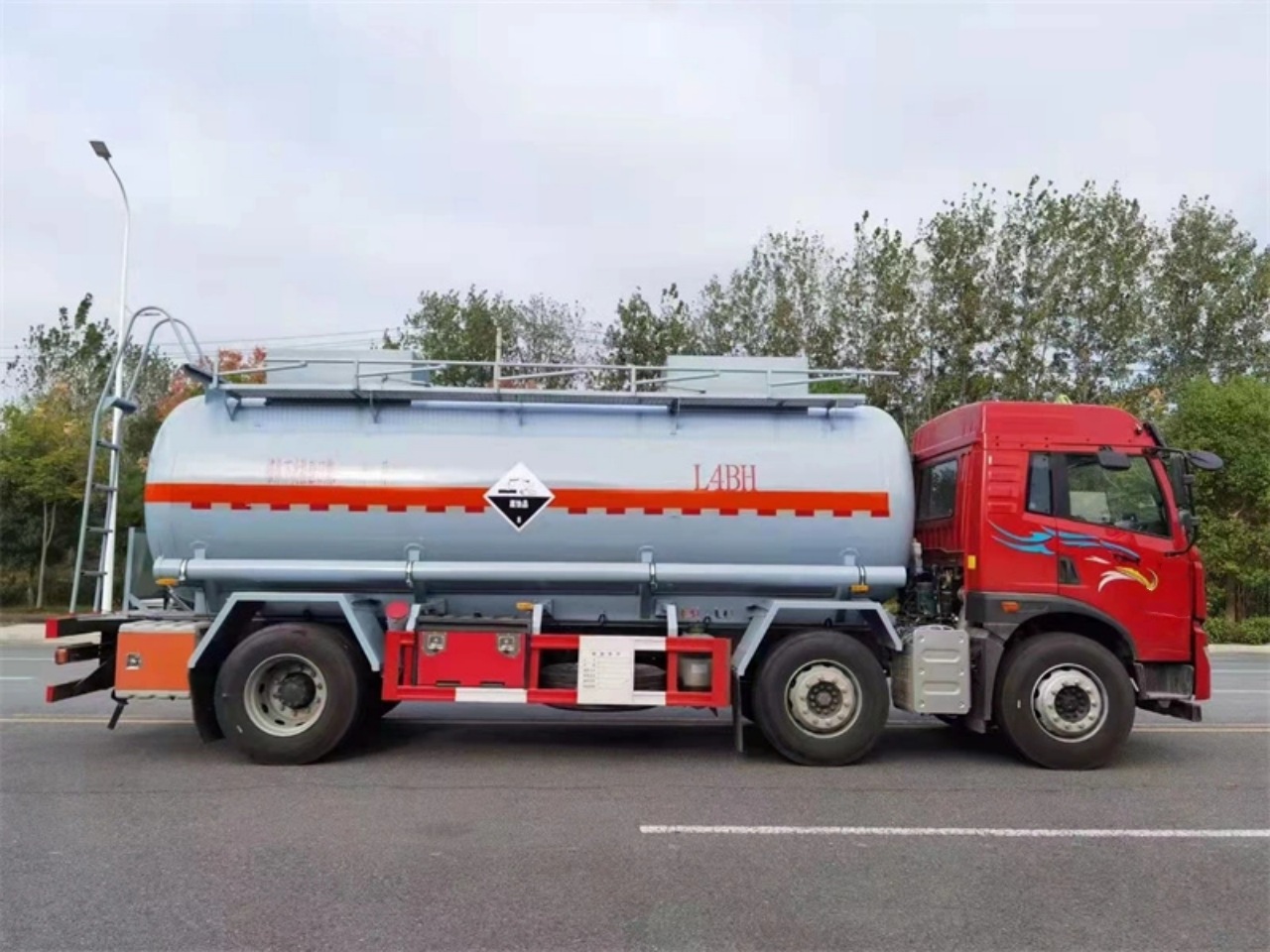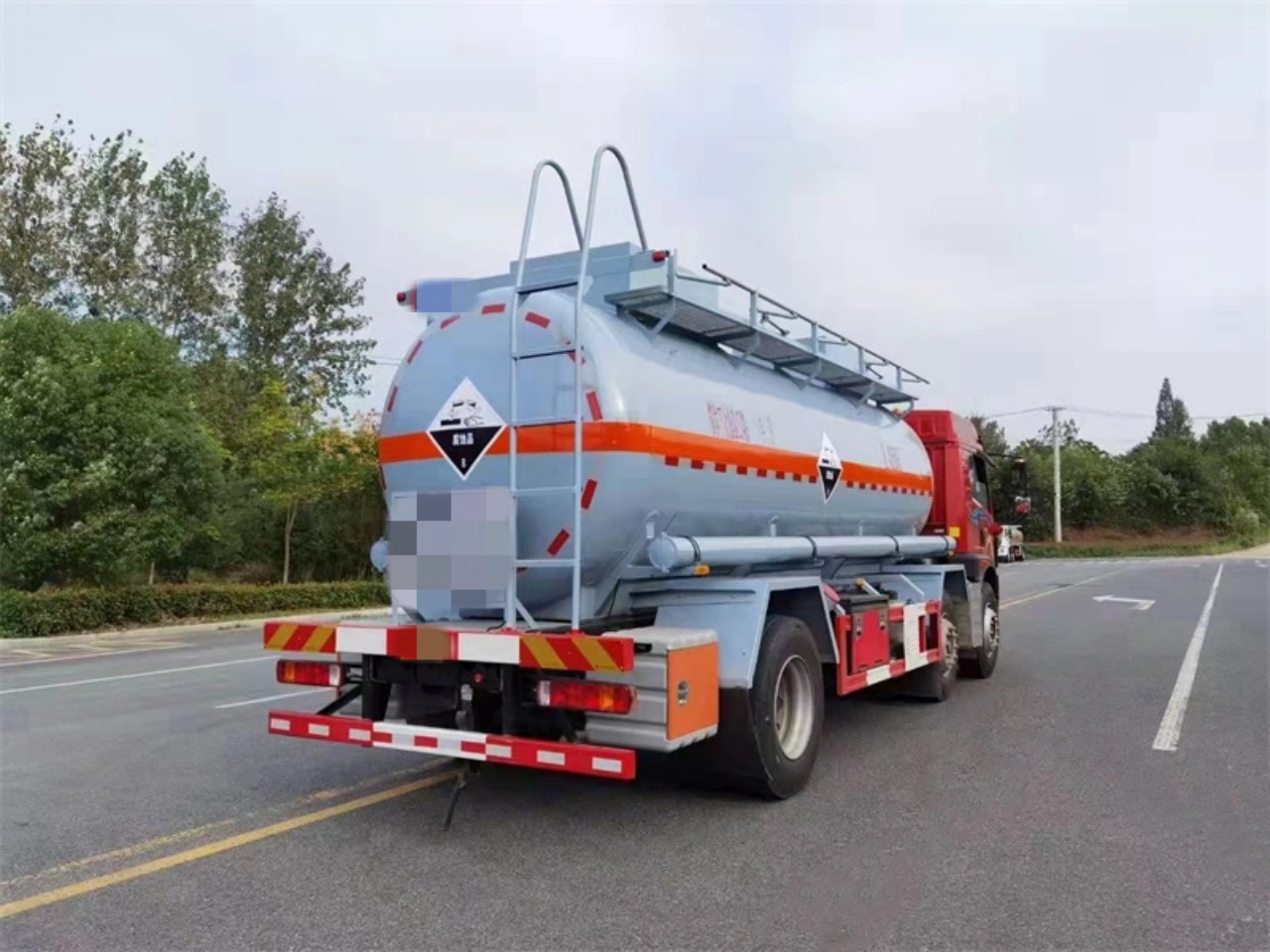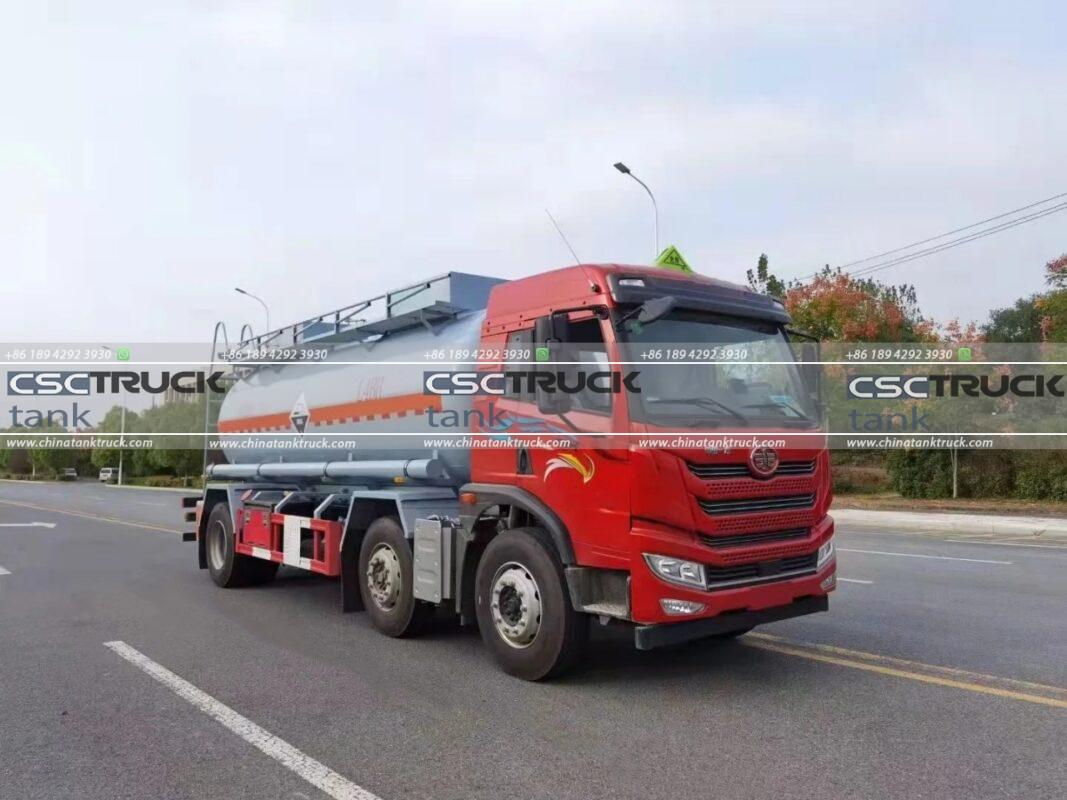Introduction
Corrosive tank trucks play a vital role in the transportation of hazardous chemicals used in various industries, including manufacturing, agriculture, pharmaceuticals, and water treatment. These specialized vehicles are designed to transport substances such as acids, bases, and other highly reactive chemicals safely. Due to the inherent risks associated with corrosive materials, the construction of these tankers requires the use of specialized materials, and strict safety measures must be followed to prevent accidents, leaks, and contamination.
Materials Used in Corrosive Tank Trucks
The choice of materials for corrosive tank trucks is critical to ensuring longevity, structural integrity, and safety. Since corrosive chemicals can cause rapid degradation of conventional materials, the industry relies on specialized materials that offer resistance to chemical attack. Below are the most common materials used in corrosive tank truck construction:
1. Stainless Steel
Stainless steel is widely used in the manufacturing of corrosive tank trucks due to its high resistance to oxidation, corrosion, and chemical reactions. The most commonly used stainless steel grades include:
- 316L Stainless Steel: Contains molybdenum, which enhances resistance to chloride-induced corrosion.
- 304 Stainless Steel: Provides good general corrosion resistance but is less resistant to strong acids than 316L.
- Duplex Stainless Steel: Offers higher strength and superior resistance to stress corrosion cracking compared to conventional stainless steel grades.
2. Fiberglass-Reinforced Plastic (FRP)
FRP tanks are an alternative to stainless steel, particularly when transporting highly aggressive chemicals such as hydrochloric acid or sulfuric acid. The benefits of FRP include:
- Chemical Resistance: The resin composition can be tailored to resist specific chemicals.
- Lightweight Construction: Lighter than stainless steel, which improves fuel efficiency.
- Non-Conductive: Reduces the risk of electrochemical corrosion.
3. Polyethylene and Polypropylene Linings
For additional protection, some tank trucks feature plastic linings made from polyethylene or polypropylene. These linings help:
- Prevent Corrosion: Acting as a barrier between the metal surface and the transported chemicals.
- Extend Tank Life: Reducing wear and tear from aggressive chemicals.
- Enhance Safety: Minimizing the risk of leaks and contamination.
4. Rubber Linings
Rubber linings provide an effective protective layer against certain acids and alkalis. They are often used in steel tanks to prolong service life and prevent direct metal exposure to corrosive substances.

Safety Precautions in Corrosive Tank Truck Operations
Transporting corrosive substances involves significant risks, including chemical spills, leaks, and worker exposure. To mitigate these risks, stringent safety precautions must be followed at every stage of operation.
1. Tank Design and Maintenance
- Proper Venting Systems: Corrosive chemicals may produce gases that build up pressure inside the tank. Proper venting prevents overpressurization.
- Double-Walled Tanks: Provide an extra layer of protection in case of leaks.
- Regular Inspections: Tanks must be inspected for wear, corrosion, or structural damage before each use.
- Leak Detection Systems: Advanced sensors can detect leaks early, preventing hazardous situations.
2. Loading and Unloading Procedures
- Dedicated Transfer Hoses: Use hoses that are chemically compatible with the transported substance.
- Closed-Loop Systems: Reduce exposure to toxic fumes by ensuring sealed transfers.
- Spill Containment Measures: Emergency containment areas should be in place to handle accidental spills.
3. Personal Protective Equipment (PPE)
Workers handling corrosive chemicals must wear appropriate PPE, including:
- Chemical-resistant gloves (e.g., nitrile, neoprene, or butyl rubber)
- Safety goggles and face shields
- Full-body protective suits
- Respiratory protection when dealing with fume-emitting substances
4. Emergency Response Protocols
- Spill Response Kits: Contain absorbents, neutralizers, and protective gear.
- Emergency Eyewash and Showers: Must be available in case of accidental exposure.
- First Aid Training: Personnel should be trained to handle chemical burns and inhalation exposure.
5. Regulatory Compliance
Corrosive tank trucks must adhere to stringent regulations enforced by agencies such as:
- Department of Transportation (DOT): Governs hazardous material transportation.
- Occupational Safety and Health Administration (OSHA): Sets worker safety standards.
- Environmental Protection Agency (EPA): Regulates spill prevention and response measures.
- ADR (European Agreement Concerning the International Carriage of Dangerous Goods by Road): Governs transportation in Europe.
Future Innovations in Corrosive Tank Trucks
The field of corrosive tank truck design is continuously evolving to enhance safety, efficiency, and environmental protection. Some emerging trends include:
1. Advanced Coating Technologies
Innovative coatings, such as fluoropolymer and ceramic-based coatings, are being developed to improve chemical resistance and extend tank lifespan.
2. Smart Monitoring Systems
Real-time monitoring technologies using IoT (Internet of Things) sensors allow fleet operators to track:
- Temperature and pressure changes inside the tank
- Leak detection alerts
- Structural integrity analysis through predictive maintenance algorithms
3. Hybrid and Electric-Powered Tank Trucks
To reduce environmental impact, some manufacturers are exploring hybrid and fully electric tank trucks. These vehicles not only lower emissions but also offer quieter operation and lower operating costs.
4. Automation in Loading and Unloading
Robotic systems and automated valves are being introduced to minimize human exposure to hazardous chemicals, enhancing safety and efficiency.

Conclusion
Corrosive tank trucks are essential for the safe and efficient transportation of hazardous chemicals. The choice of materials, from stainless steel to FRP and protective linings, plays a crucial role in ensuring durability and safety. Strict safety precautions, including proper tank maintenance, PPE use, and adherence to regulatory guidelines, are vital in preventing accidents. With ongoing advancements in materials science, automation, and smart monitoring, the future of corrosive tank trucks looks promising, offering improved safety, efficiency, and sustainability. Ensuring best practices in the handling and transportation of corrosive substances is not only a legal requirement but also a moral responsibility to protect workers, communities, and the environment.

